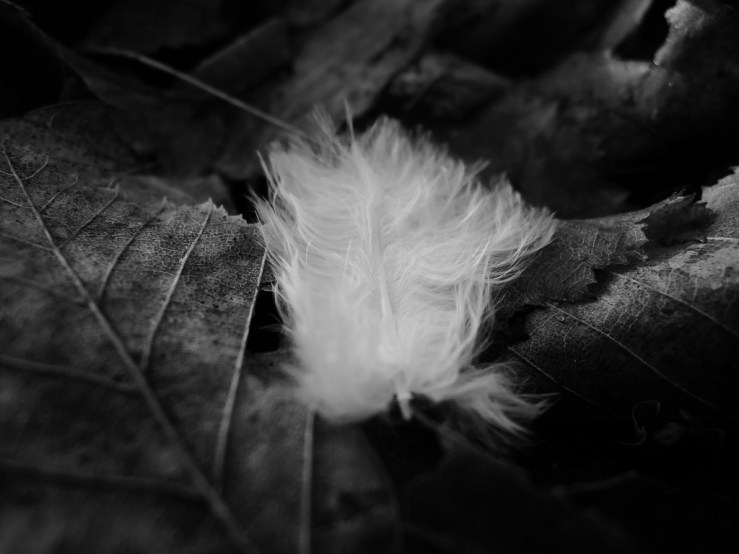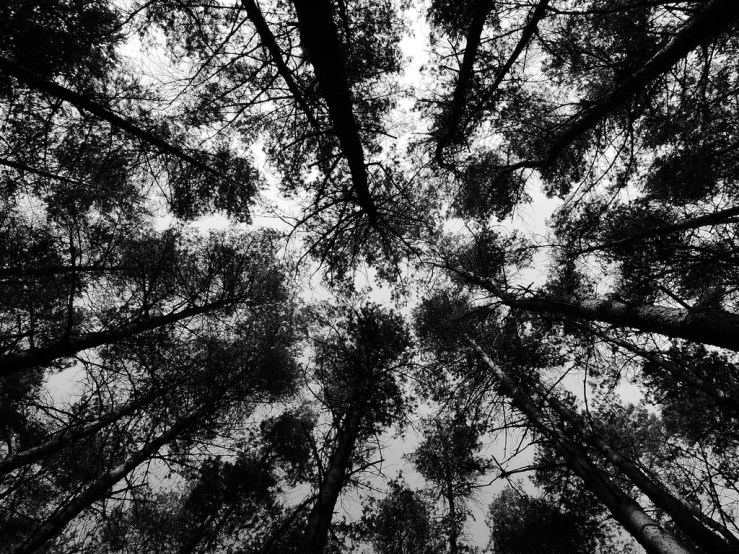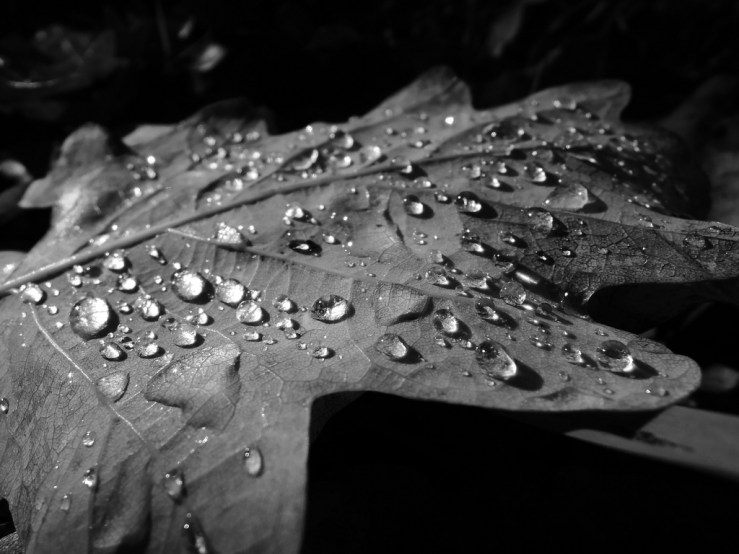When you’re shooting film, you can’t turn the world – or your viewfinder – black and white.
So it’s helpful to be able to learn to see in b/w so you can discover the scenes and lighting and textures that will make the best b/w photographs.
Before I began my great film adventure (2012-2017), the preceding seven months I was shooting abundantly with a Nikon Coolpix, then the most sophisticated camera I’ve ever owned (and still the camera I’ve spent most money on, by some margin).
I quickly found that the Coolpix has a neat high contrast b/w mode.
This gave me moody and inky b/w photos without any fiddling about with software afterwards. I just plugged the camera into my laptop, uploaded the photographs, deleted those that didn’t make the grade and kept the rest, a very simple workflow.

But more importantly, the b/w mode, as with other modes on the Coolpix, benefited from live preview.
In other words, the camera’s screen shows you exactly how the photo will look before you release the shutter.
Without realising it at the time, this interactive feedback taught me the impact of aperture on depth of field, how to lock focus on part of a picture then recompose so the focus wasn’t always on the central object, and how to fool/force the camera to over or under expose certain parts of the scene for a more desirable final image.
What the little Nikon’s screen also showed me, was how the world looked in black and white.
Over time, and with practice, I came to find the kinds of photographs that seemed to look better in b/w to me, than they would in colour.
I reached the point where, before even switching the camera on, I was starting to look beyond the colours of the scenes around me, and instead considering textures, patterns, light and shadow.

Seven months and over 7000 photographs with the Nikon later, I came into film photography with a vastly more informed idea of shooting in b/w than I ever could have got from just shooting film cameras, none of which of course can give you any direct b/w feedback.
So, even if you predominantly shoot (and want to continue to shoot) black and white film photos (here’s a way to make it far affordable), then I would strongly encourage you to try carrying a digital camera with you too, set to a black and white mode.
You don’t even have to make any pictures with the digital camera, and a half decent camera phone will suffice.
As long as you start viewing the world in b/w through the screen of the digital camera, it can’t help but make it easier for you to make photographs better suited to b/w, rather than shooting with black and white film loaded and your full colour eyes, and hoping that a few of the photos might turn out ok in b/w when you have them developed days or weeks later.

Have you tried using a digital camera to help you learn to see in b/w? What other tips do you have about seeing better photographs in b/w?
Please share your thoughts and ideas in the comments below (and remember to tick “Notify me of new comments via email” box to follow the conversation).
Thanks for looking. Please share this post with others you feel will enjoy it too. If you’re interested, this is what my photography and cycling life looks like right now.


I like to go over the color photos stored on my I Pad and use the editing feature to temporarily convert them to B&W so that I learn to see which ones are most suited to that medium. I study them to learn what factors make them tick. Usually contrast is a big factor but so is tonal range. Really only one in ten look good in mono but I was seeing in color when I took them. It still is useful though for learning to see in B&W. Color is a whole other animal. You have to really work at it to begin seeing in monochrome.
Patricia, thanks for your thoughts. So what is your approach when you want to shoot in b/w from the outset, rather than covert photos you made in colour originally?
I have been shooting black and white film almost exclusively for 65 years. I can judge the relative value (brightness) of the different colored objects in the scene by squinting almost to the point of extinction – with one big exception. I have blue-yellow color blindness that keeps me from seeing the relative value of yellow and green objects the way other people (and black and white film) see them. When photographing a yellow object against a green background, or vice versa, I do exactly what you suggest and use the black and white mode of my cell phone camera to see how they will be rendered in black and white.
That’s really interesting Doug. Does your partial colour blindness impact taking colour photos?
It is strange how some colours look near identical in b/w because their tone is in the same range.
In theory, it shouldn’t effect my taking color photographs. I can make color prints which, to me, look just like the original subjects. But others with normal color vision tell me that some of them look good and others look like someone has incorrectly set the ‘tint’ or ‘hue’ control on an old TV set. I have no trouble scanning slides. I’ve given up scanning color negatives in color. If I scan them at all is is as black and white.
According to one source, Tritanomaly, which I have, or Tritanopia, the more serious form of Tritan or blue-yellow color blindness) effects one in 10,000 people. I am the only patient with the condition that my ophthalmologist has ever seen.
Love this posts collection of photos especially the feather. well done you. I am going to check if my little camera does black and white xoxo susanJOY
Thanks Susan. Even the simplest and oldest cameras I’ve used (like the three 4MP ones I recently compared) have a b/w mode of some kind, so I’m sure yours will have too. Let us know!
You’re going to think I’m an idiot, but it has never occurred to me to switch my camera to b/w mode! Thank you for the great suggestion — and for the inspiring images.
You’re welcome Heide, thanks for stopping by.
I guess because before the Coolpix I used to shoot b/w in a very similar way with phone cameras, it was something I looked for immediately when considering a more “serious” digital camera.
Which model was the Coolpix please?
Hi Phil, thanks for asking, it’s a P300.
https://www.nikonusa.com/en/nikon-products/product-archive/compact-digital-cameras/coolpix-p300.html
Nikon have made dozens of decent models in the Coolpix range though, so I’m sure there are others with a similar high contrast mono mode. I remember when I was researching a camera, the P300 was very well regarded and I bought based on very good reviews and being about the best I could afford at the time (2011). I think the retail price was £399 and I ended up getting a deal at £299.
It wasn’t really until a couple of years later once I’d learned far more by shooting film cameras, that I realised how many great features it had, like 24mm at the wide end, PASM modes, and a fast f/1.8 max aperture. And of course the high contrast mono.
Ironically seven years and hundreds of cameras later, my favourites I’ve settled on have a similar high contrast b/w mode – the Ricoh GRD III, Pentax Q, Panasonic Lumix LX3 and Lumix GF1. I’ve come full circle!
I found I learned more about black and white when I was playing around with black and white film. You really have to pay attention to the different tones before clicking that shutter; often something that looks amazing in colour isn’t so great in b&w! And playing around with different filters – green, yellow, orange and red – was so much fun! I loved comparing the different looks.
Mel, thanks for your input. I’m curious about how you got to the point of knowing which tones would work best as black and white photographs with using a film camera, when you were seeing in colour?
Using filters is something I’ve thought about trying for years but never got round to it. I think because it’s always seemed like another layer of fiddling about, and you know how I like to keep things simple and direct!
I read online about black and white photography and what the different filters do, then I bought the filters and did a bit of trial and error. So, for example, I would shoot one roll with a yellow filter, then another with orange and green filters. I also took some notes as I went along.
Reading about different filters helped a lot, because I couldn’t really visualise what they did until after that. For example, I learned that if I wanted to make dark flowers stand out against green foliage, I should use a green filter.
With digital, before my GX7 anyway, black and white processing was always an afterthought, so I never really learned about what the different filter settings in Lightroom did; I just played around with them until I got an image I liked, and never learned anything.
I think there is a balance between knowing enough about the parameters of photography to be able to make deliberate choices that make your photographs more how you want them, and just getting overwhelmed with too many variables and settings.
I definitely lean towards the simpler side, but I can see that I’ve learned and absorbed plenty over the years that influences my photography today, that I do/set without really thinking.
Virtually anyone can play around in LightRoom and eventually land upon a look they like. But knowing what you’re choosing (at every stage of the process, from which camera and lens you use onwards) and why, is, I feel, a far preferable place to be. And of course it means you can replicate the decisions you make that result in your favourite photographs again, rather than hitting and hoping each time.
Just wanted to say I really enjoyed this post! It was well written, informative and the photos are amazing. Keep up the great work.
Thanks Jacob, glad you enjoyed the post and photographs, and I appreciate you saying.
[…] this is mainly so I can cheat and see in black and white with the camera’s assistance rather than purely in my own […]
[…] and convert to b/w after, though this isn’t really something I want to do regularly as I like seeing in b/w via the camera’s screen as I’m […]
[…] whilst I prefer having the b/w shown on screen, by now I feel I’m experienced enough to be able to visualise what will look better in b/w without […]